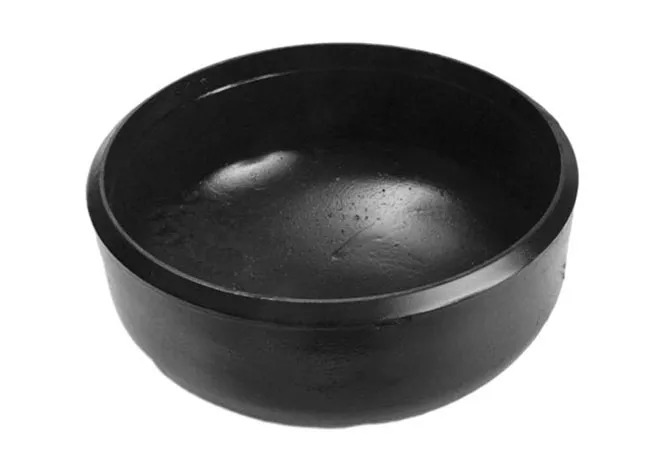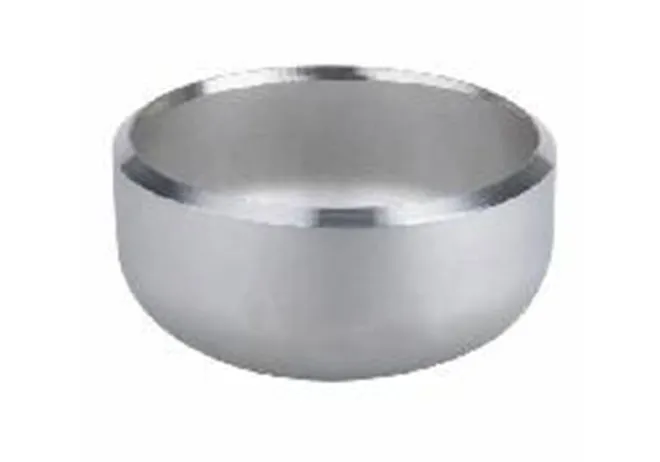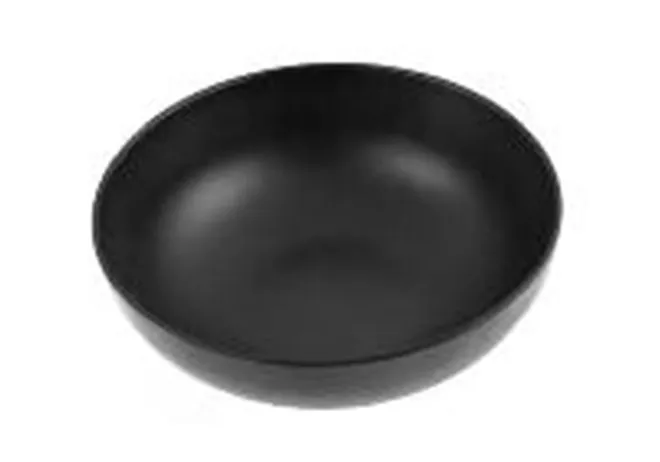-
Cangzhou Yulong Steel Co., Ltd.
-
Phone:
+86 13303177267 -
Email:
admin@ylsteelfittings.com
- English
- Arabic
- Italian
- Spanish
- Portuguese
- German
- kazakh
- Persian
- Greek
- French
- Russian
- Polish
- Thai
- Indonesian
- Vietnamese
- Zulu
- Korean
- Uzbek
- Hindi
- Serbian
- Malay
- Ukrainian
- Gujarati
- Haitian Creole
- hausa
- hawaiian
- Hebrew
- Miao
- Hungarian
- Icelandic
- igbo
- irish
- Japanese
- Javanese
- Kannada
- Khmer
- Rwandese
- Afrikaans
- Albanian
- Amharic
- Armenian
- Azerbaijani
- Basque
- Belarusian
- Bengali
- Bosnian
- Bulgarian
- Catalan
- Cebuano
- China
- China (Taiwan)
- Corsican
- Croatian
- Czech
- Danish
- Esperanto
- Estonian
- Finnish
- Frisian
- Galician
- Georgian
- Kurdish
- Kyrgyz
- Lao
- Latin
- Latvian
- Lithuanian
- Luxembourgish
- Macedonian
- Malgashi
- Malayalam
- Maltese
- Maori
- Marathi
- Mongolian
- Myanmar
- Nepali
- Norwegian
- Norwegian
- Occitan
- Pashto
- Dutch
- Punjabi
- Romanian
- Samoan
- Scottish Gaelic
- Sesotho
- Shona
- Sindhi
- Sinhala
- Slovak
- Slovenian
- Somali
- Sundanese
- Swahili
- Swedish
- Tagalog
- Tajik
- Tamil
- Tatar
- Telugu
- Turkish
- Turkmen
- Urdu
- Uighur
- Welsh
- Bantu
- Yiddish
- Yoruba

Sep . 09, 2024 15:17 Back to list
Pipe Caps
Pipe caps play a crucial role in various piping systems, acting as protective covers that seal the ends of pipes. They are essential components in industries ranging from construction and plumbing to oil and gas, ensuring that pipelines remain secure, clean, and operational. This article delves into the application scope of pipe caps, examining their diverse uses across different sectors. Whether it's preventing leaks, protecting pipes during transport, or capping off unused sections of pipelines, pipe caps are indispensable for maintaining the integrity of any piping system.
In construction and plumbing, pipe caps are used to terminate the flow of liquids or gases, preventing leaks and protecting the ends of pipes from damage. In the oil and gas industry, pipe caps are used to seal off pipelines during maintenance or when the pipeline is not in use, ensuring that the system remains secure. Additionally, pipe caps are employed in various industrial applications to protect pipes from corrosion, contamination, or physical damage during transport or storage.
Understanding Pipe Cap Materials and Structure
The effectiveness of a pipe cap largely depends on the materials and structure used in its construction. Pipe caps are available in a wide range of materials, including stainless steel, carbon steel, plastic, and rubber, each offering distinct advantages depending on the application.
Stainless steel pipe caps are known for their durability and resistance to corrosion, making them ideal for use in harsh environments, such as chemical processing plants or marine applications. Carbon steel pipe caps offer strength and durability, making them suitable for high-pressure applications. Plastic pipe caps, on the other hand, are lightweight and cost-effective, often used in plumbing and construction projects where corrosion resistance is less of a concern. Rubber pipe caps provide flexibility and a tight seal, making them ideal for use in situations where a secure, leak-proof connection is required.
The structure of a pipe cap is also crucial in determining its performance. Common types of pipe caps include flat head caps, round head caps, and conical caps. Flat head caps are often used in applications where the pipe end needs to be flush with the surrounding surface, while round head caps provide a smooth, rounded finish that offers additional protection against physical damage. Conical caps, with their tapered design, are ideal for sealing off pipes that will eventually be connected to other fittings or equipment.
Drain Pipe Caps: Essential for Drainage and Sewage Systems
Drain pipe caps are specifically designed for use in drainage and sewage systems, where they serve as crucial components in managing the flow of water and waste. These caps are typically used to seal off the ends of drain pipes, preventing debris, pests, and foul odors from entering the pipeline. Additionally, drain pipe caps help maintain the integrity of the drainage system by preventing leaks and ensuring that water and waste are directed to the appropriate outlets.
In sewage systems, drain pipe caps play a vital role in preventing the backflow of waste, which can cause contamination and health hazards. By securely sealing off the ends of pipes, these caps help maintain a hygienic and efficient sewage system. They are also used in stormwater management systems to prevent the entry of debris and pollutants into the drainage system, helping to protect the environment and reduce the risk of flooding.
Drain pipe caps are available in various materials, including plastic, rubber, and stainless steel, each offering specific benefits depending on the application. Plastic caps are lightweight and easy to install, making them ideal for residential drainage systems, while stainless steel caps provide durability and corrosion resistance for industrial applications.
How to Cap Water Pipes: A Step-by-Step Guide
Capping water pipes is a common task in plumbing, especially when modifying or repairing a plumbing system. Whether you're sealing off a pipe that is no longer in use or temporarily closing a pipe during renovations, knowing how to properly cap water pipes is essential for preventing leaks and water damage.
To cap a water pipe, start by turning off the water supply to the pipe you intend to cap. This can usually be done by closing the main water valve or the specific valve leading to the pipe. Once the water supply is turned off, drain any remaining water from the pipe by opening a nearby faucet. This will relieve pressure and ensure that no water is left in the pipe.
Next, clean the end of the pipe to remove any debris or buildup that could interfere with the seal. Depending on the type of pipe, you may need to use a pipe cleaner or sandpaper to ensure a smooth surface. After cleaning, select a pipe cap that matches the size and material of the pipe. For example, if you're capping a copper pipe, use a copper cap or a cap specifically designed for use with copper pipes.
Once you have the correct pipe cap, apply pipe sealant or Teflon tape to the threads of the pipe, if necessary. This will help create a watertight seal. Then, carefully screw the pipe cap onto the end of the pipe, making sure it is securely fastened. If you're using a push-fit or compression cap, simply push the cap onto the pipe until it is fully seated.
Finally, turn the water supply back on and check for any leaks. If the pipe cap is properly installed, there should be no water escaping from the sealed end. If you notice any leaks, tighten the cap further or apply additional sealant as needed.
Capping water pipes is a straightforward process, but it requires careful attention to detail to ensure a secure and leak-proof seal. By following these steps and using the appropriate pipe cap, you can effectively cap water pipes and maintain the integrity of your plumbing system.
Pipe caps are essential components in a wide range of applications, providing protection, security, and reliability for pipelines in various industries. Whether you're dealing with drainage, sewage, or water supply systems, choosing the right pipe cap and understanding how to install it properly is key to ensuring the longevity and performance of your piping system.
Latest news
-
ANSI 150P SS304 SO FLANGE
NewsFeb.14,2025
-
ASTM A333GR6 STEEL PIPE
NewsJan.20,2025
-
ANSI B16.5 WELDING NECK FLANGE
NewsJan.15,2026
-
ANSI B16.5 SLIP-ON FLANGE
NewsApr.19,2024
-
SABS 1123 FLANGE
NewsJan.15,2025
-
DIN86044 PLATE FLANGE
NewsApr.19,2024
-
DIN2527 BLIND FLANGE
NewsApr.12,2024
-
JIS B2311 Butt-Welding Fittings LR/SR 45°/90° /180°Seamless/Weld
NewsApr.23,2024















